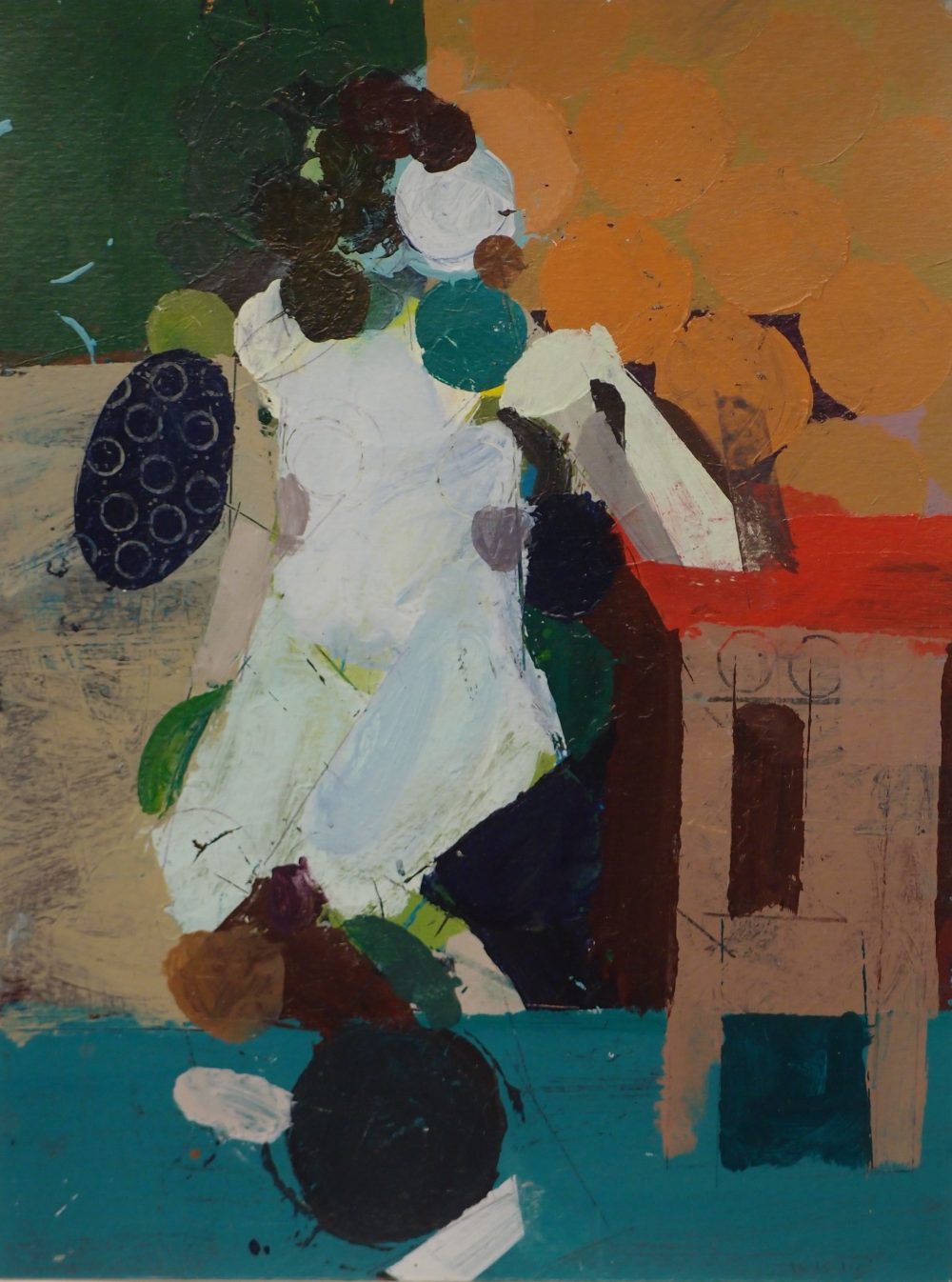Blue Nude by Ken Kewley
- Title: Blue Nude
- Artist: Ken Kewley
- Medium: Mixed media
- Size: 12"h x 9"w
- Creation date: 2015
- Added to collection: 2015
- Donor: Purchased by Portland Community College,Rock Creek Campus
- Campus: Rock Creek
- Location: B3/1 S Hallway gallery
There are many ways in which artists work directly from observation. Some art challenges our assumptions about what it means to look, and question how the act of looking is different from the act of naming (illustration). This small painting by Ken Kewley was made from observation of a female model. The particular contour of the torso indicates a scrutiny of anatomical forms and the way weight is distributed in a seated figure. But other parts of the painting veer into the abstraction of forms, the notation of flat patterns and shapes, and pure invention.
The tools chosen in making this painting are unusual and have leveraged the artist to abbreviate three-dimensional forms into two-dimensional shapes. This is an acrylic painting on smooth card stock where the paint has been applied flatly with a brush against a straight edge (likely cardboard) to reduce conventional modelling and blending. Other parts of the painting may have been painted by stamping (perhaps using plastic bottle caps) in order to further reduce the impulse to describe. Some contour lines in pen drawn with a straight edge are visible both below and on top of the paint surface. The result is a blend of description and abstraction unified by a flattened surface treatment and subtly related colors based on vibrations of red/orange and green/blue. Such a synthesis of looking and inventing can be found in many works of early Modernism, particularly the late Cubist works of George Braque, an artist whom Kewley greatly admires. Although there is a decorative aspect to this work, its formal inventions relate to complex ideas of perception, such as how objects in peripheral vision reduce to simple shapes; the dark blob in the lower foreground could stand for how any number of objects (a pillow? a basketball? a poodle?) might appear if one were focused elsewhere.

